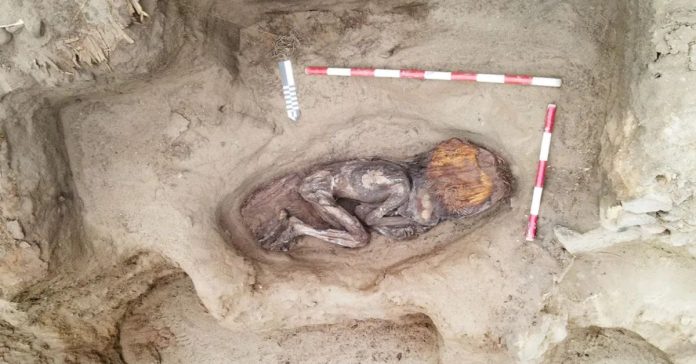A team of archaeologists in Peru has uncovered the well-preserved remains of a high-status woman buried with an array of elaborate grave goods, including a toucan beak inlaid with beads and a panel adorned with macaw feathers. The discovery, made at the ancient coastal settlement of Aspero, provides new insights into the social hierarchy and material culture of the Caral civilization, one of the earliest complex societies in the Americas.
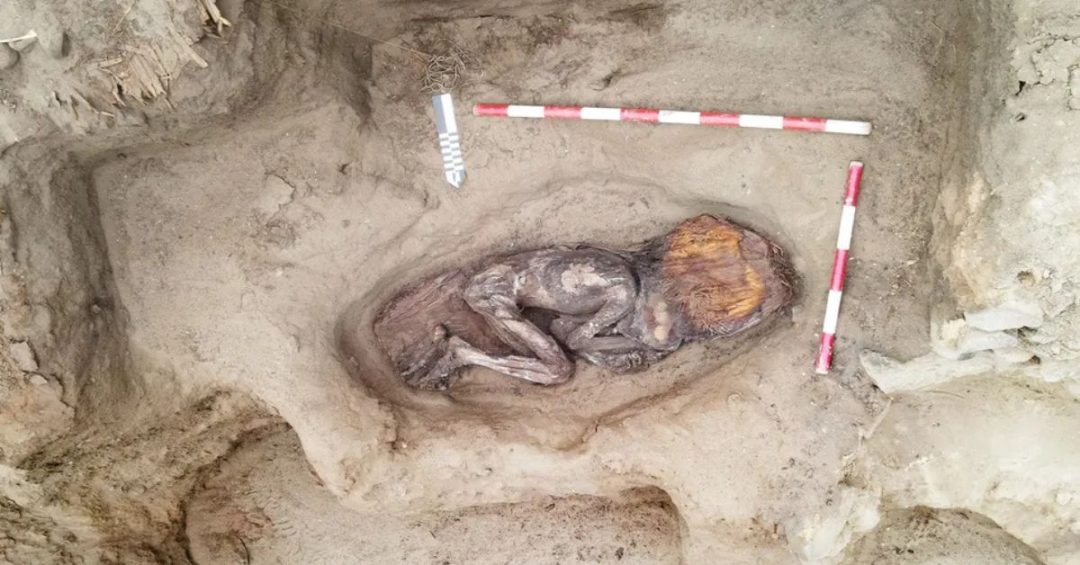
Peru’s Ministry of Culture recently announced the discovery of a burial dating between 3000 and 1800 BCE. Archaeologists uncovered the remains of a woman, estimated to have been between 20 and 35 years old, interred with offerings such as an embroidered feather panel, a decorated toucan beak, an Amazonian snail shell, about 30 sweet potatoes, and a fishing net. Her body was wrapped in multiple layers of textiles, including cotton fabrics, plant fiber bundles, and woven mats, which helped preserve her skin, hair, and nails—an exceptional outcome in a region where typically only skeletal remains survive.
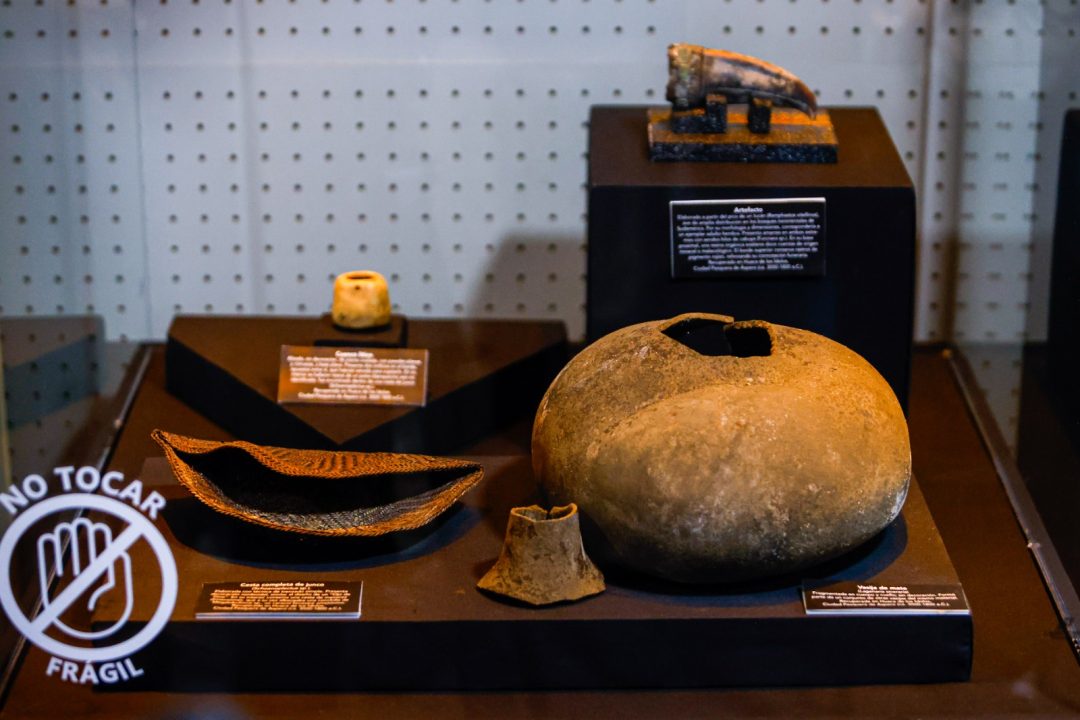
Social Status and Cultural Context in Ancient Peru
The prestigious grave goods suggest that the woman held a high social rank within the Caral civilization, a preceramic society known for its monumental architecture, including pyramids and urban centers like Caral-Supe, a UNESCO World Heritage Site. Aspero, located about 0.7 kilometers from the Pacific coast, was a major settlement at the time, featuring at least 22 architectural complexes and likely serving as a hub for fishing and trade.
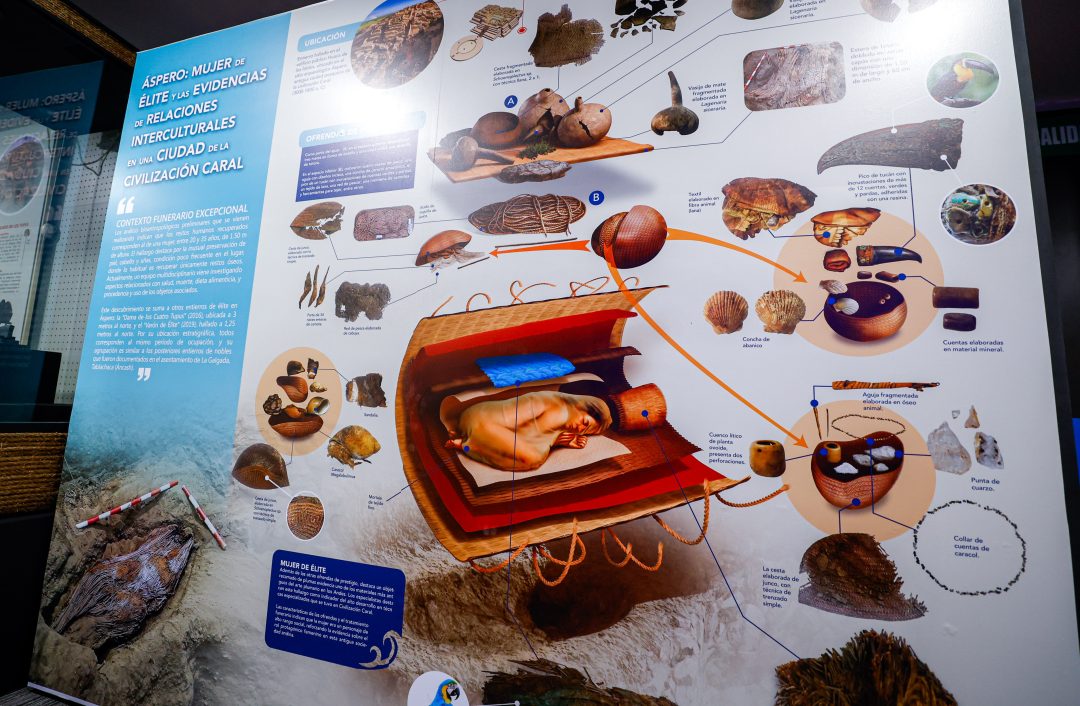
This discovery aligns with previous findings indicating that women in the Caral civilization could attain elite status. In 2016, archaeologists at Aspero uncovered another high-status female burial. They named her the “Lady of the Four Tupus” due to four ornamental brooches (tupus) shaped like birds and monkeys found with her remains. The recurrence of such burials suggests that women likely held prominent roles in early Andean societies’ social and political structures.
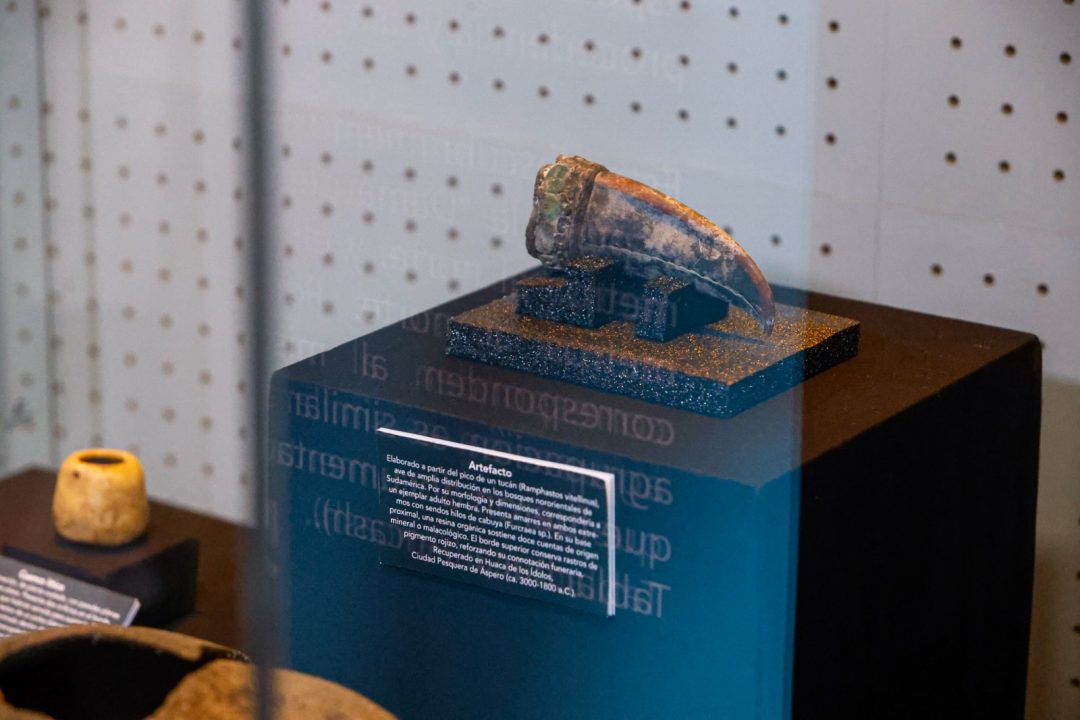
Research Implications and Future Work
Because the Caral civilization lacked a known writing system, scholars rely heavily on archaeological evidence to reconstruct its social organization, trade networks, and cultural practices. The discovery of non-local items, such as the toucan beak and Amazonian snail shell, suggests long-distance exchange networks linking coastal Peru with tropical regions.
Researchers are now analyzing the woman’s remains and associated artifacts to learn more about her diet, health, and possible cause of death. Excavations at Aspero, now in their 20th year, continue to yield significant findings that expand understanding of early Andean civilizations. Future discoveries will likely shed more light on the roles of elite women and the broader societal dynamics of the Caral culture.
This finding highlights Aspero’s importance as a key site for studying early social complexity in the Americas. It also showcases the advanced cultural developments of Peru’s ancient civilizations.
References:
- Peru’s Ministry of Culture (official statement)
- UNESCO World Heritage Centre (Caral-Supe)
- Previous archaeological reports from Aspero excavations

